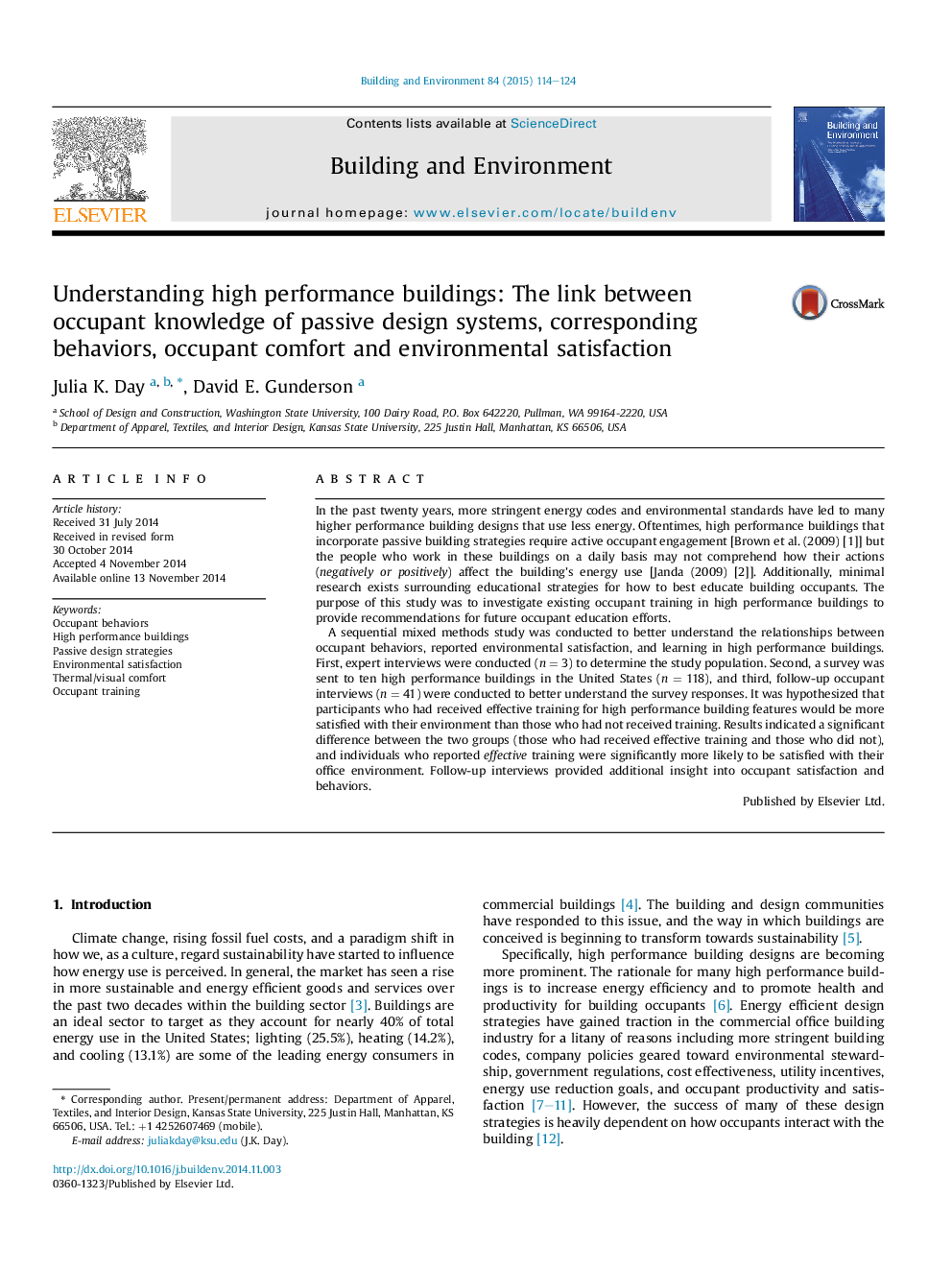| کد مقاله | کد نشریه | سال انتشار | مقاله انگلیسی | نسخه تمام متن |
|---|---|---|---|---|
| 247982 | 502538 | 2015 | 11 صفحه PDF | دانلود رایگان |
• A mixed-methods study examined occupant behaviors in high performance buildings.
• The relationship between occupant satisfaction and level of training were studied.
• Behavior was influenced by visual/thermal comfort, level of control and social cues.
• Occupants with effective training were more satisfied with their office environment.
In the past twenty years, more stringent energy codes and environmental standards have led to many higher performance building designs that use less energy. Oftentimes, high performance buildings that incorporate passive building strategies require active occupant engagement [Brown et al. (2009) [1]] but the people who work in these buildings on a daily basis may not comprehend how their actions (negatively or positively) affect the building's energy use [Janda (2009) [2]]. Additionally, minimal research exists surrounding educational strategies for how to best educate building occupants. The purpose of this study was to investigate existing occupant training in high performance buildings to provide recommendations for future occupant education efforts.A sequential mixed methods study was conducted to better understand the relationships between occupant behaviors, reported environmental satisfaction, and learning in high performance buildings. First, expert interviews were conducted (n = 3) to determine the study population. Second, a survey was sent to ten high performance buildings in the United States (n = 118), and third, follow-up occupant interviews (n = 41) were conducted to better understand the survey responses. It was hypothesized that participants who had received effective training for high performance building features would be more satisfied with their environment than those who had not received training. Results indicated a significant difference between the two groups (those who had received effective training and those who did not), and individuals who reported effective training were significantly more likely to be satisfied with their office environment. Follow-up interviews provided additional insight into occupant satisfaction and behaviors.
Journal: Building and Environment - Volume 84, January 2015, Pages 114–124
